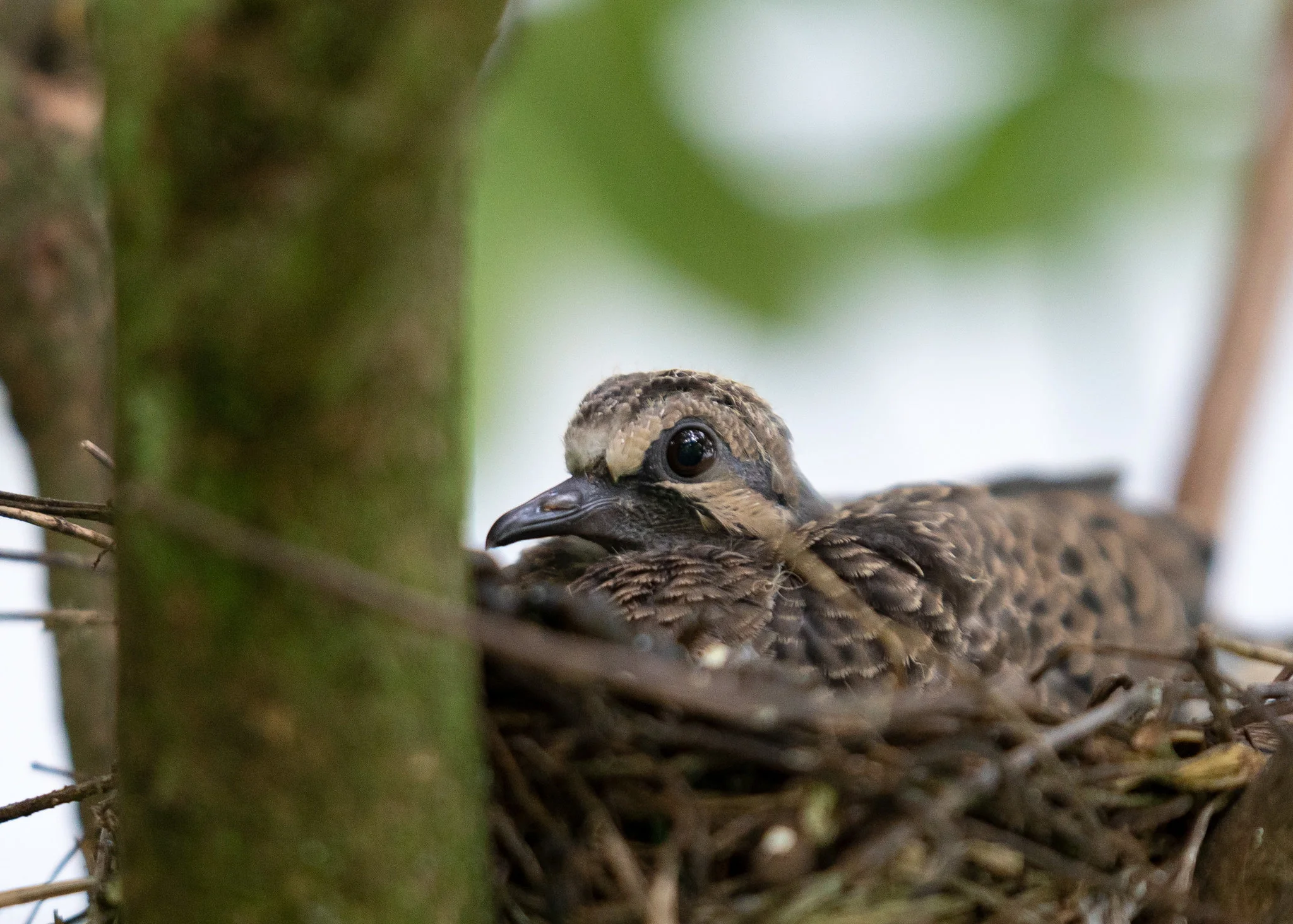Mourning Doves are common in both rural and urban areas alike, frequently taking up residence in neighborhoods. Despite their apparent abundance, Mourning Doves are subtle nesters, and the majority of people will never observe a Mourning Dove nest. So, where do Mourning Doves nest to be able to conceal their nests so well? Moreover, when do Mourning Doves lay eggs?
Well, if you’re seeking information about the nesting habits of Mourning Doves, you’ve come to the right place! I will answer a plethora of questions related to Mourning Dove nesting habits. Additionally, I’ll discuss the Mourning Dove nesting period and provide insight regarding when you can expect to see Mourning Dove babies. Let’s get started!
Table of Contents
Where Do Mourning Doves Nest?
It’s easy to find a Mourning Dove feeding below a bird feeder or perching on a wire, but finding the nest of these birds is a challenge. In fact, the apparent scarcity of Mourning Dove nests prompts many to wonder where all the Mourning Doves have gone. Although Mourning Doves are still quite numerous, there’s no denying that Mourning Dove nesting habits are rather secretive. So, where do Mourning Doves nest?
Well, the reason that nesting Mourning Doves are often so difficult to find is that these birds nest in secluded locations where they can keep a low profile. Indeed, conifers, dense hedges, well-vegetated tree limbs, and occasionally human structures or equipment make for optimal Mourning Dove nesting locations.
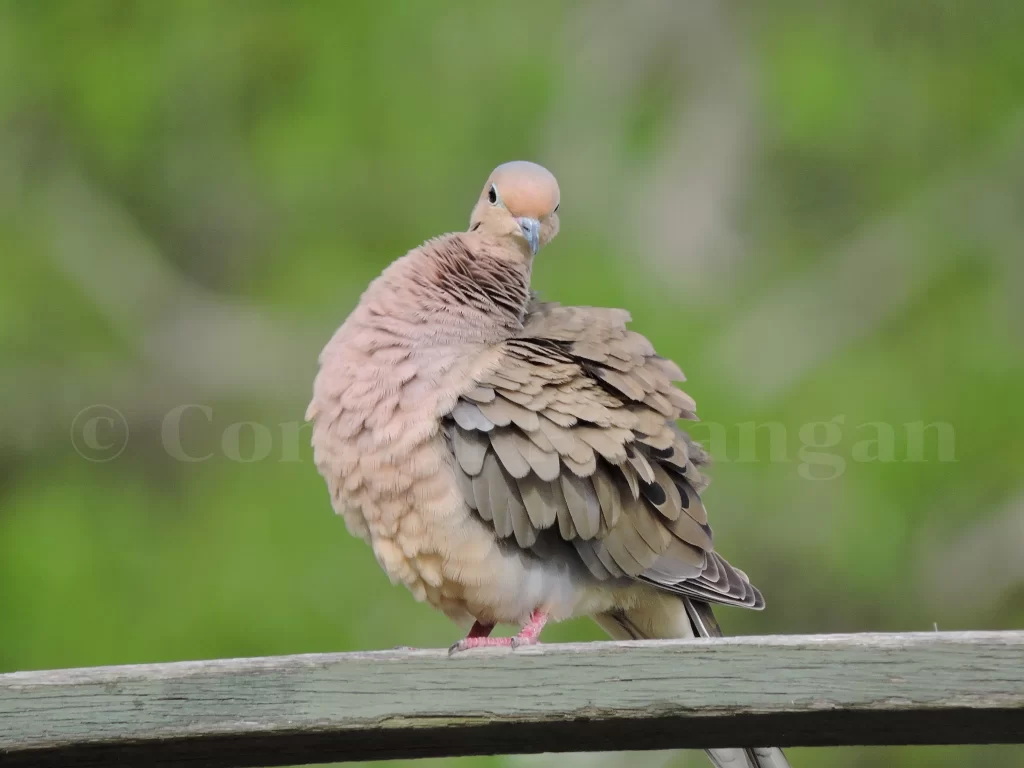
Therefore, it is unsurprising that these birds are often difficult to find during the Mourning Dove nesting season. Okay, now that we’ve addressed the question, “Where do Mourning Doves nest?”, we can talk about whether or not these beloved birds ever place their nests on the ground. Do Mourning Doves nest on the ground?
Do Mourning Doves Nest On The Ground?
When most consider a premium nesting location, few consider the ground to be an optimal location. Nevertheless, many birds are known to situate their nests along the ground. However, is ground nesting consistent with Mourning Dove nesting habits – do Mourning Doves nest on the ground?
Yes, Mourning Doves do nest on the ground in some cases! You may be curious as to why they would do this when there are other—seemingly better—options available.
Well, consider that Mourning Doves may not always have a better nesting location accessible to them. Indeed, those who breed in arid parts of North America may not have access to much tree cover. Therefore, their situations necessitate that they build their nests on the ground.
Fortunately, the ground is not a bad place for a nest. After all, Mourning Doves can hide their nest among grasses or other dense ground cover, allowing their nest to be shielded from aerial predators.
What Does A Mourning Dove Nest Look Like?
There’s no doubt that Mourning Dove nests are often difficult to find, but perhaps the reason why some people ask “Where do Mourning Doves nest?” is simply because they aren’t familiar with the appearance of a Mourning Dove nest. So, what does a Mourning Dove nest look like?
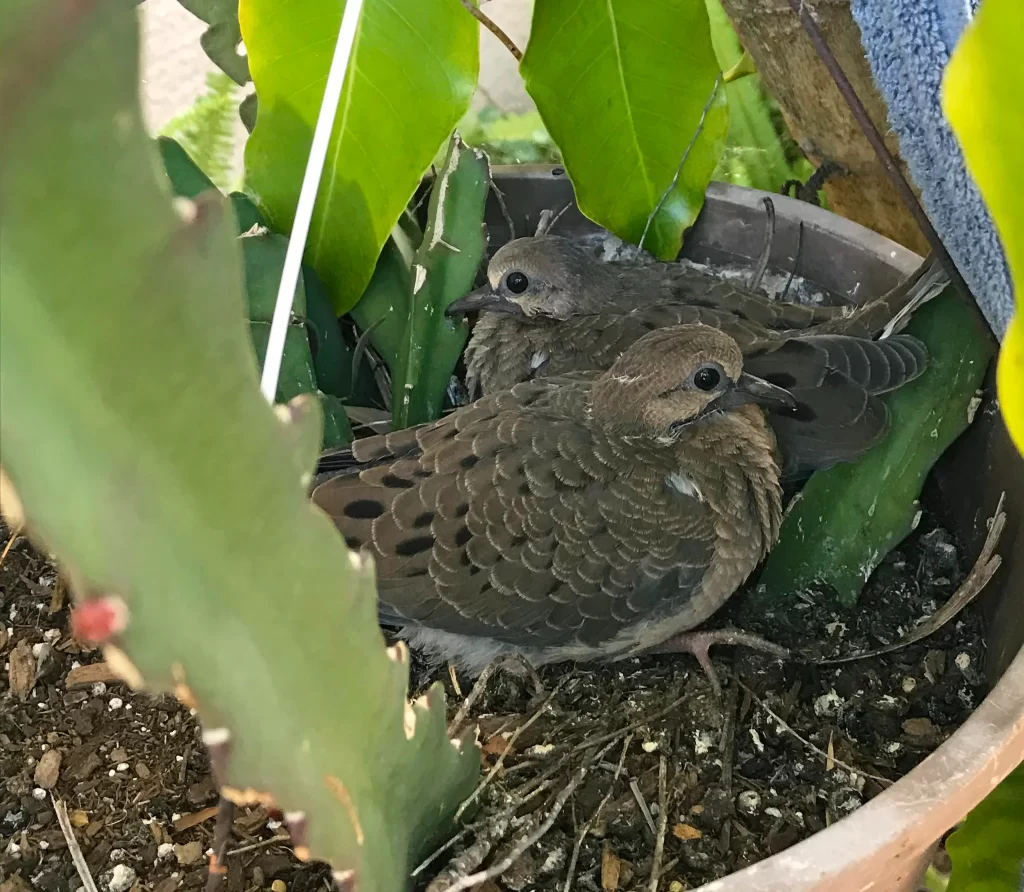
Well, for those expecting intricate, impressive construction from a Mourning Dove, you will be entirely disappointed. What does a dove nest look like? Well, a Mourning Dove nest looks just as delicate as the birds themselves, appearing to be a hastily made assortment of sticks, grasses, and other materials. Additionally, a Mourning Dove bird nest lacks much insulation, and they often appear as though they could disintegrate at any point.
When Do Mourning Doves Lay Eggs?
Okay, now that we know more about where do Mourning Doves nest, we can begin to discuss Mourning Dove eggs. There are plenty of egg-related questions concerning these birds. Let’s start by discussing when to expect eggs in a Mourning Dove nest – when do Mourning Doves lay eggs?
Incredibly, Mourning Doves can lay eggs at just about any time of the year if the weather permits. These birds are prolific breeders, and they are built to produce numerous clutches of eggs annually.
Therefore, Mourning Doves can lay eggs about any time of the year in climates that don’t have a cold winter season. In more northerly climates, they may begin incubating eggs in March or April and continue to rear young through September.
How Many Eggs Do Mourning Doves Lay?
Now that you know that Mourning Doves are supposedly prolific breeders, you may assume that Mourning Doves are producing dozens of babies every year. Well, not so fast – how many eggs do Mourning Doves lay?
Surprisingly, Mourning Doves only lay two eggs per clutch, and it’s uncommon for them to lay any more or any less than this amount. This number will surprise many people, as most expect the answer to “How many babies do doves have?” to be more.
So, why have Mourning Dove nesting habits evolved in such a way – why don’t Mourning Doves lay more eggs?
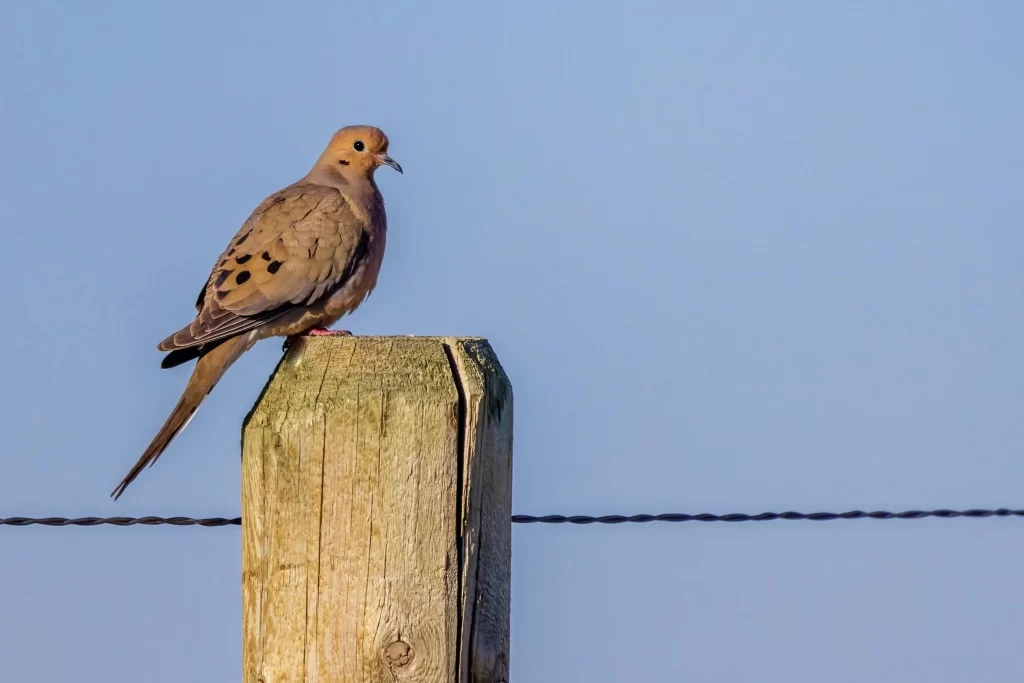
Well, there are plenty of theories as to why Mourning Doves only lay two eggs per clutch, but know that these creatures still produce plenty of offspring every year. In fact, Mourning Doves can lay as many as six clutches of eggs annually! Therefore, it’s not uncommon for a Mourning Dove pair to produce anywhere from six to twelve offspring annually.
How Long Does It Take For Mourning Dove Eggs To Hatch?
If you are lucky enough to stumble upon a Mourning Dove bird nest, you may want to know how long the eggs will be incubated. So, how long does it take for Mourning Dove eggs to hatch?
Well, a Mourning Dove nest with two eggs usually requires about two weeks of incubation. It then takes around another two weeks for the young to fledge and leave the nest.
As I mentioned, these birds are prolific in their breeding abilities, and they may even lay more eggs in their nest before their first batch of young have fledged.
How Long Do Mourning Doves Nest?
There’s no question that Mourning Doves are committed parents, as tending to multiple broods of young each year is no small feat. So, considering the handful of broods that Mourning Doves can produce, how long do Mourning Doves nest each year?
Amazingly, many Mourning Doves will commit more than six months of the year to raising their young. Therefore, they invest far more time into nesting than many of their counterparts. However, they can afford to do so thanks to the milk-like substance that they feed to their young.
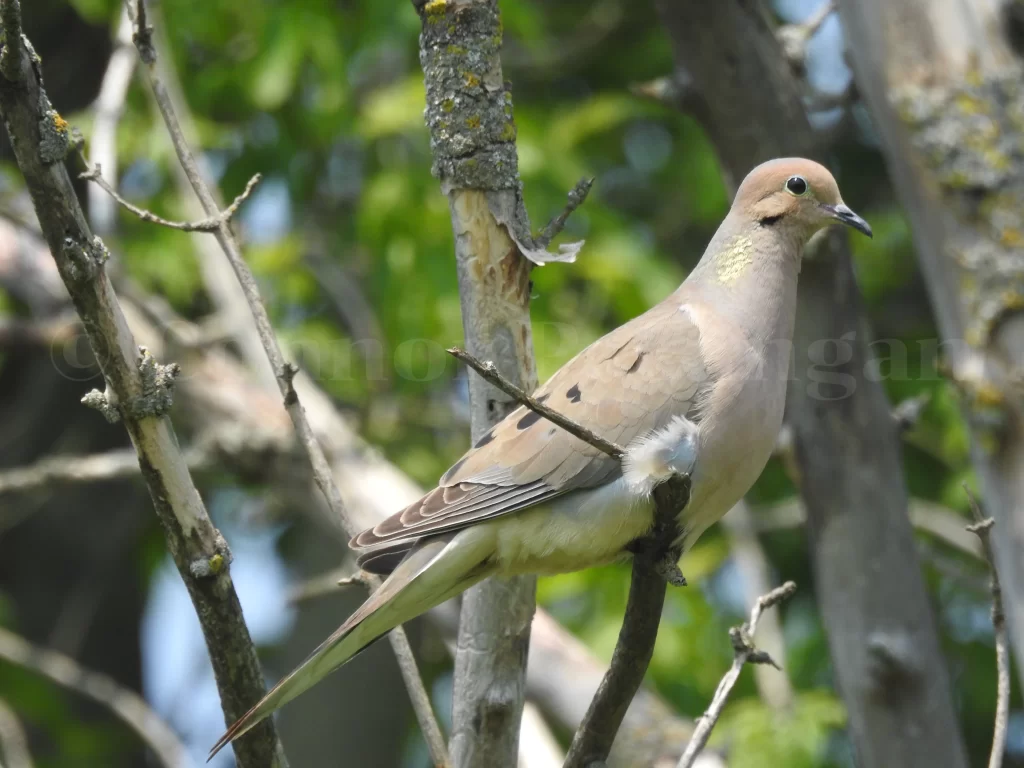
Providing this food to their babies negates the need for constant favorable weather during a nesting season.
Do Mourning Doves Return To The Same Nest?
Those who ask, “Where do Mourning Doves nest?” and then use their newfound knowledge to locate a nest may wonder if they should expect a Mourning Dove pair to reuse their nest. Do Mourning Doves return to the same nest?
Yes, Mourning Doves are known to reuse their nests or even use the nests of other birds! Although it does not take an immense amount of time for them to build a new nest, they’re not concerned with the appearance of their nest. Indeed, as long as it can support their young, they are happy to use a nest from a previous breeding season.
Can You Move A Mourning Dove Nest?
Although Mourning Doves are among the most beloved and admired birds in North America, there will always be some who fail to appreciate these birds. Some may even want to rid their property of Mourning Doves. So, can you move a Mourning Dove nest?
No, moving an active Mourning Dove nest is illegal according to the Migratory Bird Treaty Act. This act prohibits the removal of native bird nests, and seeing as though Mourning Doves are native birds, moving their nests is prohibited.
Even if such an act were legal, there’s little incentive to move a Mourning Dove bird nest. After all, these birds are not messy, they are peaceful, and their presence is ultimately not a burden to anyone.
If someone asks you, “Can you move a Mourning Dove nest?” be sure to tell them that such an action is illegal and irresponsible.

